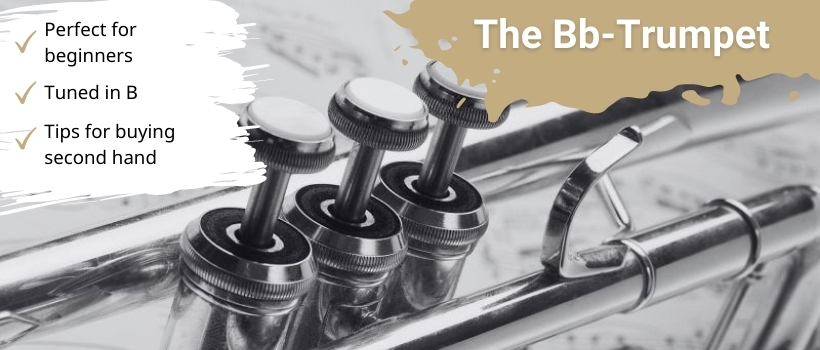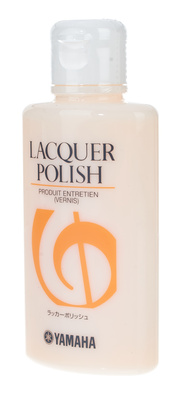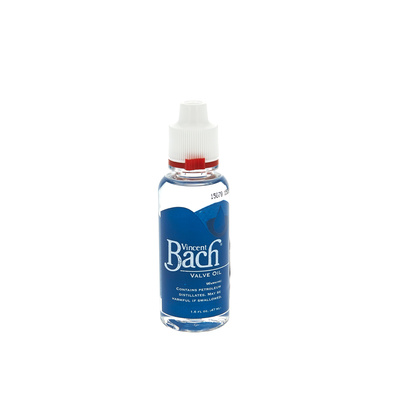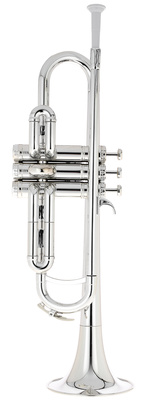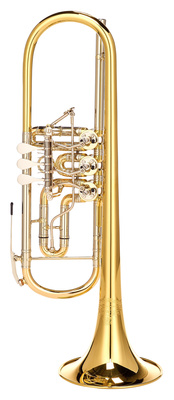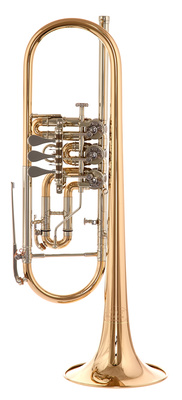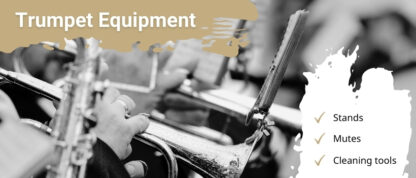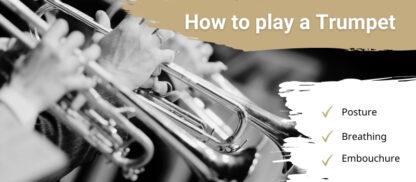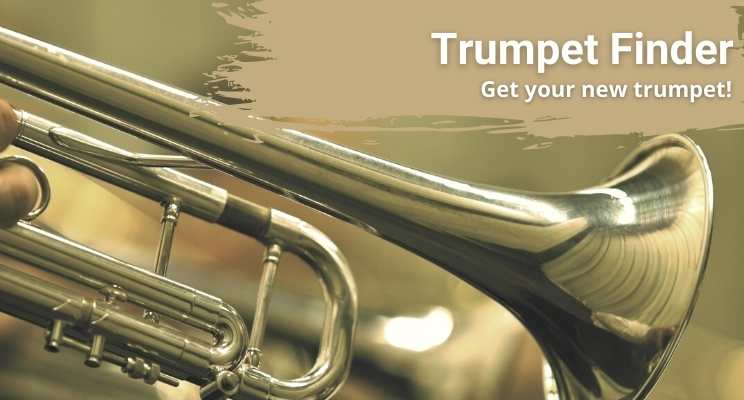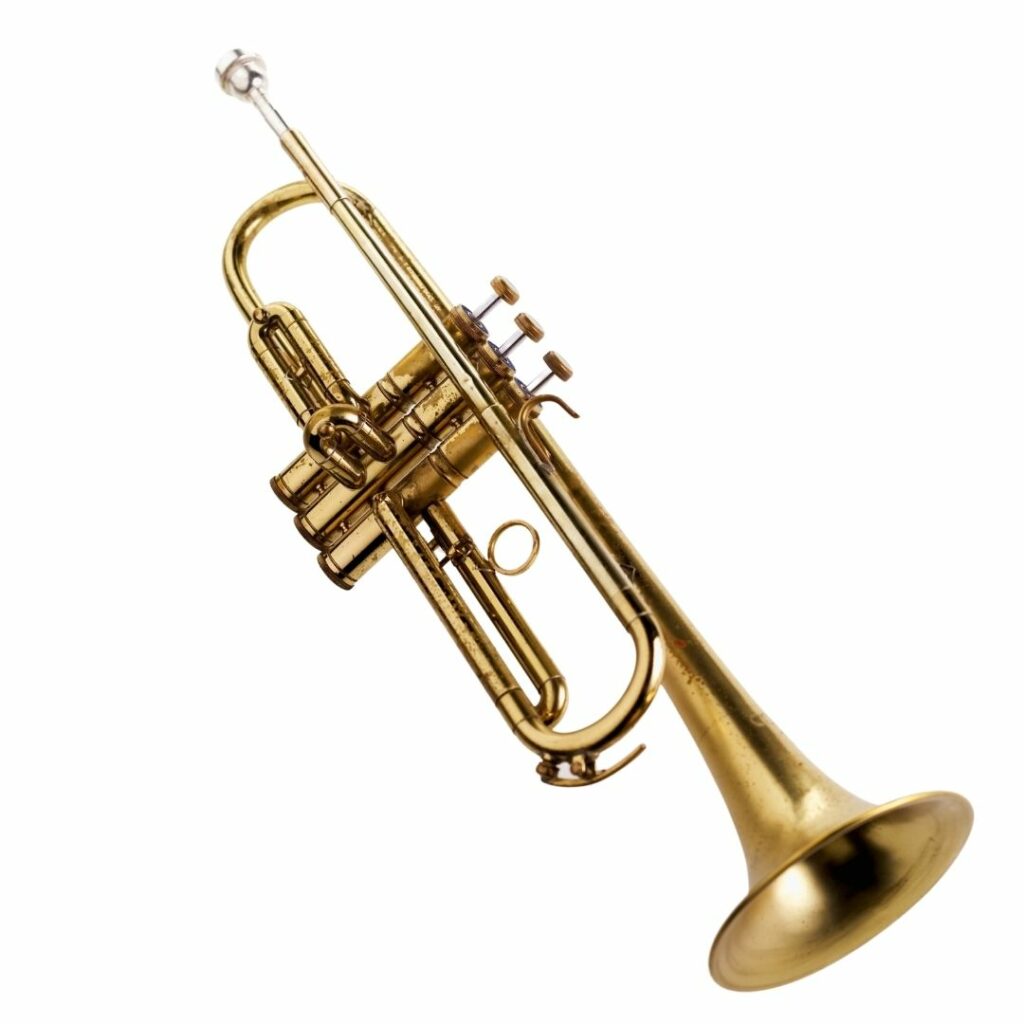
It is the perfect model for beginners: the Bb trumpet. Most people start playing the trumpet on this instrument. It is handy and makes learning easier, especially at the beginning. The Bb trumpet can be found in all musical styles, but it is hard to imagine jazz and the big band without it.
What distinguishes the Bb trumpet from others?
Despite its tube length of over 130 centimetres, the Bb trumpet is also well suited for beginners and is easy to handle. Due to the winding of the tube, the actual length is usually only around 50 centimetres. In contrast to the piccolo trumpet, for example, the Bb trumpet has 3 valves. Depending on the player’s ability, 3 to 4 octaves can be played. The range of the Bb trumpet is from A-flat to E-flat.
For whom is the Bb trumpet suitable?
The Bb trumpet is the most popular model and is particularly well suited for beginners to trumpet playing. However, this does not mean that it is only suitable for beginners. Because above all, the trumpet grows with the skill of the player. Therefore, it is an ideal model for beginners, but also a faithful companion beyond that.
What does the Bb trumpet sound like?
Except for the C trumpet, all types of trumpet belong to the transposing instruments. This means that the notation of the notes does not correspond to the sound. As the name suggests, the Bb trumpet transposes to Bb. A played C therefore sounds one second lower than Bb. This makes it one of the lower-sounding trumpets. The bass trumpet, for example, sounds even lower. The piccolo trumpet, for example, sounds high.
Which equipment is available for the Bb trumpet?
If you want to enjoy your trumpet for a long time, you need the right equipment. This includes not only regular care, but also mouthpieces and mutes, for example. We have an overview of everything for you.
Mouthpieces for the trumpet
Unlike the clarinet and saxophone, the trumpet does not have a reed that vibrates to produce a sound. Instead, the tone is produced by the lips of the player. The sound produced by the trumpet is therefore very dependent on the individual characteristics of the player. The different mouthpieces therefore do not sound the same for everyone. The rule is: try it out! Only those who try out the different mouthpieces and check which sound harmonises best with their own can find the right mouthpiece for themselves.
The mouthpieces are made of metal and coated with silver, gold or titanium for durability. However, this has little influence on the sound and is more a matter of appearance. The shape and manufacture of the mouthpiece are very important for the sound.

- The rim diameter
The rim diameter of the mouthpiece determines how much space your lips have in the mouthpiece to vibrate. Diameters between 14 and 18 millimetres are common. Basically, the smaller the rim diameter, the easier the embouchure and the longer it takes to play. At the same time, as the rim diameter decreases, the tone loses warmth and can sound shrill. A larger rim diameter produces warmer tones, but is more strenuous to play in the long run. Especially for beginners, it is a good idea to start with a mouthpiece with a small rim diameter and gradually increase it.
- The edge width
The rim width of the mouthpiece also varies from narrow to wide and also from flat to rounded. A narrow, pointed rim ensures a fast and precisely defined tone. However, it can also have a negative effect on your endurance, for example through poor blood circulation to your lips. A wide rim, on the other hand, is more comfortable to play, but it also affects the way your lips vibrate. This can make the response more difficult.
Here, too, it depends on the individual physiognomic conditions of the player to find the ideal rim width. There is no “best” mouthpiece for everyone.
- The boiler shape
The cup is the inner shape of the mouthpiece. It can be bulbous or narrow, for example. The larger the diameter of the cup, the more voluminous the sound. At the same time, a large cup diameter also requires more force to produce a sound. A flat cup is especially advantageous for the high notes. Due to the low resistance, only little force is needed to produce a sound.
To be able to play both high and low notes, you need a good middle ground. Again, it’s a matter of trying things out and finding the right piece for your own playing technique.
Mute for the trumpet
Mutes minimise the volume of the trumpet. This way, even when practising in a rented flat, it can be ensured that an appropriate volume is maintained. However, this inevitably changes the sound of the trumpet. That is why people like to experiment with mutes in order to create new sound worlds. However, playing with a mute becomes more strenuous. It is often used as an exercise to build up stamina for long concerts.
There are numerous mutes in different shapes and materials that influence the sound differently. Among them, for example:
- The straight mute
The straight mute has a pointed shape and is therefore often called a “pointed mute”. It almost completely closes the bell of the trumpet. The sound also differs depending on the material.
Straight mutes made of aluminium, for example, sound rather bright and rough, while plastic mutes sound warmer.
- The Plunger

In contrast to the straight mute, the plunger is not inserted into the bell, but held in front of the bell with the hand. The volume can be adjusted by opening and closing the plunger. The plungers are made of rubber or metal.
- The Bucket
As the name suggests, the bucket resembles a bucket. It is attached to the bell with clamps. The foam filling produces a soft, smooth sound. The bucket is produced in different depths to produce different sound variations.
- The exercise damper
The practice mute is explicitly intended to reduce the volume. This is to enable practising outside the soundproof rehearsal rooms. And you can also warm up quietly before concerts with this muffler. The bell is completely sealed by a rubber ring. The air can only escape through small holes in the mute.
- The pickup mute damper
Practising without disturbing the neighbours and still not giving up the sound authenticity: That is the intention of the pickup mute mute. The plastic mute is equipped with a microphone. The microphone picks up the sounds and passes them on to the headphones via the amplifier. This also makes it possible to train the ear without disturbing neighbours with the volume.
Cleaning the trumpet
To enjoy your trumpet for a long time, you should clean it regularly. In addition to cleaning it after practising, it should also be thoroughly rinsed and greased on a regular basis.
Cleaning after practice
When playing the trumpet, water collects from the condensed breathing air. This not only contains water, but also salivary acids. In the long term, however, these also attack the material of the trumpet, especially if it is a brass trumpet that is not lacquered. Therefore, after each playing session, it is important to open the water flap so that the liquid can drain off. Afterwards, it is best to place the trumpet in a safe place or lay it down to dry completely.
For lacquered instruments, it is advisable to spray the surfaces with a lacquer polish after playing and wipe with a microfibre cloth so that the lacquer is not attacked by hand perspiration. Appropriate alternatives are available for silver-plated or gold-plated surfaces, but they should be used sparingly to keep abrasion of the coating to a minimum. Untreated instruments should be treated regularly with a brass polish to prevent corrosion of the metal.
Intensive cleaning every 3 months
The entire trumpet should be thoroughly cleaned every quarter. To clean it, first rinse it completely from the mouthpiece to the bell with lukewarm water. When rinsing, press down all the valves several times to make sure that all the pipe windings are washed out. Then disassemble the instrument into its individual parts. To do this, unscrew the valves and remove all three valve trains. You can now put the small parts in a small tub with lukewarm rinsing water. The body of the instrument can also be put in, alternatively it should be sprayed with dishwater and the plug connections cleaned with a cloth and a little washing-up liquid.
The insides of the pipes or the valve trains can be cleaned out with a sponge moistened with washing-up liquid or a flexible and soft-bristled brush. It is advisable to pass the interior cleaner through several times to reach all the coatings. Also clean the valves and the mouthpiece as well as the valve bushings with a soft sponge. As soon as all deposits and grease residues have disappeared, all parts are carefully rinsed with clear water. The trumpet is now dried with a microfibre cloth. On the inside, and especially in the valve bushings, you should refrain from drying to avoid lint in the trumpet.
Greasing the Bb trumpet
After cleaning, as soon as the individual parts are completely dry again, all important plug connections are greased. On the one hand, this makes them more flexible, and on the other, it protects them from moisture, prevents them from corroding and therefore from seizing up to the point of immobility.
The tuning slides are also carefully rubbed with grease. Special valve oil is used on the valves, as they should be able to slide through the valve bushings as easily and without resistance as possible. If your instrument is a lacquered trumpet, it can also be sprayed with a lacquer polish from the outside and again rubbed with a microfibre cloth. The polish covers the varnish like a protective film and protects it from corrosion.
Which manufacturers are there for Bb trumpets?
The difference in cost between trumpets with a perinet valve and a model with a rotary valve is immense. While some trumpets start at 800£*, good perinet trumpets can be had for as little as 300£*. Depending on the purpose of use, it should therefore be weighed up whether you want to buy a German trumpet or a French trumpet. really has to be a German model or whether a French trumpet, which is also easier to clean and play, is not just as suitable.
Entry-level models with low purchase costs are available above all from Startone and Thomann. Mid-range and high-priced trumpets for advanced and professional players are made by Yamaha and Bach, for example, as well as the German producer B&S or Kühnl & Hoyer.
French or pump-valve trumpets
Trumpet for beginners
The entry-level brand Startone has specialised in producing affordable but high-quality instruments. The aim is to make it easier for beginners to get started. This is also the case with this French Bb trumpet. The bell and mouthpiece are made of ABS plastic, the valves of brass. Mouthpiece and gig bag are included.
For advanced learners and those who want to become one
This Bb trumpet by the manufacturer Yamaha already belongs to the mid-price segment. It is made of brass and has a gold lacquer finish. The valves are made of monel, the leadpipe of gold brass.
The professional model
With this model, Kühnl & Hoyer have launched a Périnet trumpet for professional use. The bell is made of brass, the valves of stainless steel are hand-lapped, the leadpipe is made of nickel silver. Two water flaps ensure easy drainage of the condensation water. Mouthpiece and carrying case are included.
German or rotary valve trumpets
German entry-level model
Since the German trumpets are much more expensive, even the entry-level model starts at around 800£*. The body is made of brass and lacquered with clear varnish, the outer slides and the leadpipe are made of nickel silver. The bell is replaceable. The scope of delivery includes the gig bag for safe transport of the instrument.
For advanced learners
If you already want to invest a little more in your trumpet, this Bb trumpet from B&S is a good choice. It has 3 rotary valves and is made of brass. The inner and outer slides as well as the leadpipe are made of nickel silver. Mouthpiece and case are already included.
For enthusiasts and professionals
This piece by Kühnl & Hoyer is something for professionals and enthusiasts. The bell is handmade from gold brass. Better durability is ensured by a clear varnish. For a balanced sound, the trumpet has a compensating mechanism with water key on the third slide.
FAQ: The Bb trumpet
The Bb trumpet is the classic beginner’s model among trumpets. As the name suggests, it transposes to Bb – so a C played sounds as a Bb.
“Sounding B” refers to the tuning of a transposing instrument. The note played or notated then does not correspond to the sounding note. For example, a notated/played C sounds as a Bb on a Bb trumpet.
The tuning of a trumpet refers to how the instrument transposes. For example, on a trumpet tuned to Bb, a C played will sound as a Bb.





